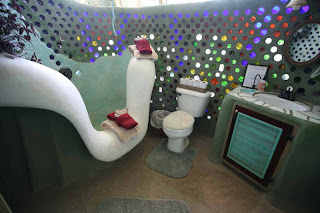What is it about the things I like that makes them special to me? Do they appeal on purely an aesthetic level or is my response more complex? Are there common traits or themes that link the things that appeal to me together?
In an effort to answer these questions and others, I pulled together a list of items I like. I wanted to analyse what it is that makes these things special to me and how I might be responding to them.
This list included all manner of media. It also included both my own work and that of other designers and artists.
I imposed just one restriction on myself when drawing up this list: I didn't hunt down new things for the purpose of this exercise. Often, something that appeals to me initially doesn't stand the test of time. Its appeal is short lived, triggered perhaps by what I'm exploring or experiencing at that point in time or a curiosity generated on first viewing but which dwindles once the surprise has gone. I felt that, by imposing this restriction, it would help me ensure that the things included were proven as things I like; indeed, I often actively use a cooling-off period as part of my design decision-making process.
After making a list of things I like, I obtained an image of each. I put each image on a single card and printed these cards out. I then considered each item in turn, writing brief notes on each card about what I liked about the item and why.

Producing cards in this way then enabled me to shuffle them around in groups, as I thought through and studied the possible commonalities and relationships between each of the items I like.
I identified a number of words and descriptions that frequently appeared. As with the cards, I printed these out and arranged them into common groups. In doing this, I identified four key levels upon which I appear to respond: emotional, experiential, structural and aesthetic.

The next stage was to establish whether some responses were more important to me than others. To help me do this, I drew up a matrix of the items I had chosen and the identified responses. I then moved through the following steps:
- I marked the responses that I felt were prevalent for each item.
- I counted the number of times each response occurred across all the items. This helped me identify the most commonly occurring responses.
- I scored each item by the number of positive responses I had marked against it. I then ordered the items in the matrix so that the highest scoring items appeared highest on the list. (As a general observation, those which I would have selected as my most favourite did appear at the top of the list, whilst those which I favoured less appeared lower down in the list.)
- I assessed each item and tried to established which of the four response groups was of greatest value in its overall appeal to me.
A copy of the matrix can be viewed on the following link:
http://dl.getdropbox.com/u/225991/MA%20Design/ThingsILike_matrix.pdf
Through this exercise I can see that I am mostly drawn to the responses I termed as Experiential and Structural. Emotional and Aesthetic responses feature less heavily in the things I like.
As a cautionary note, I am uncertain as to the statistical validity of this exercise: at times I found it difficult to pinpoint exactly what it was I liked, and liked most, about each of the items as this is highly subjective. Furthermore I doubt that I would achieve exactly the same outcomes if I were to repeat this exercise again at a future point. However, I do feel that it has been a useful step in helping me to decode my tastes, and to identify the aspects of a design that appeal to me most.
































